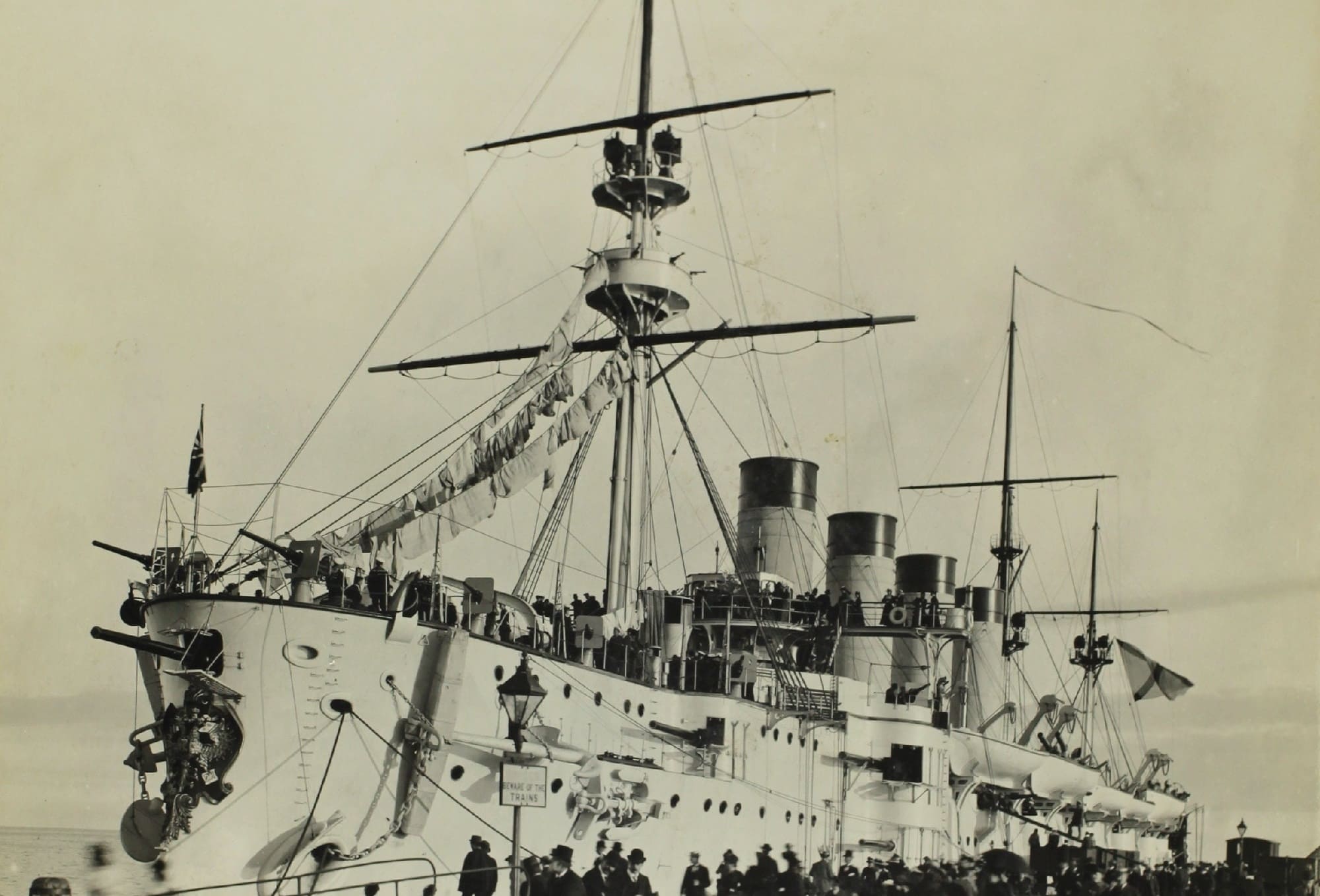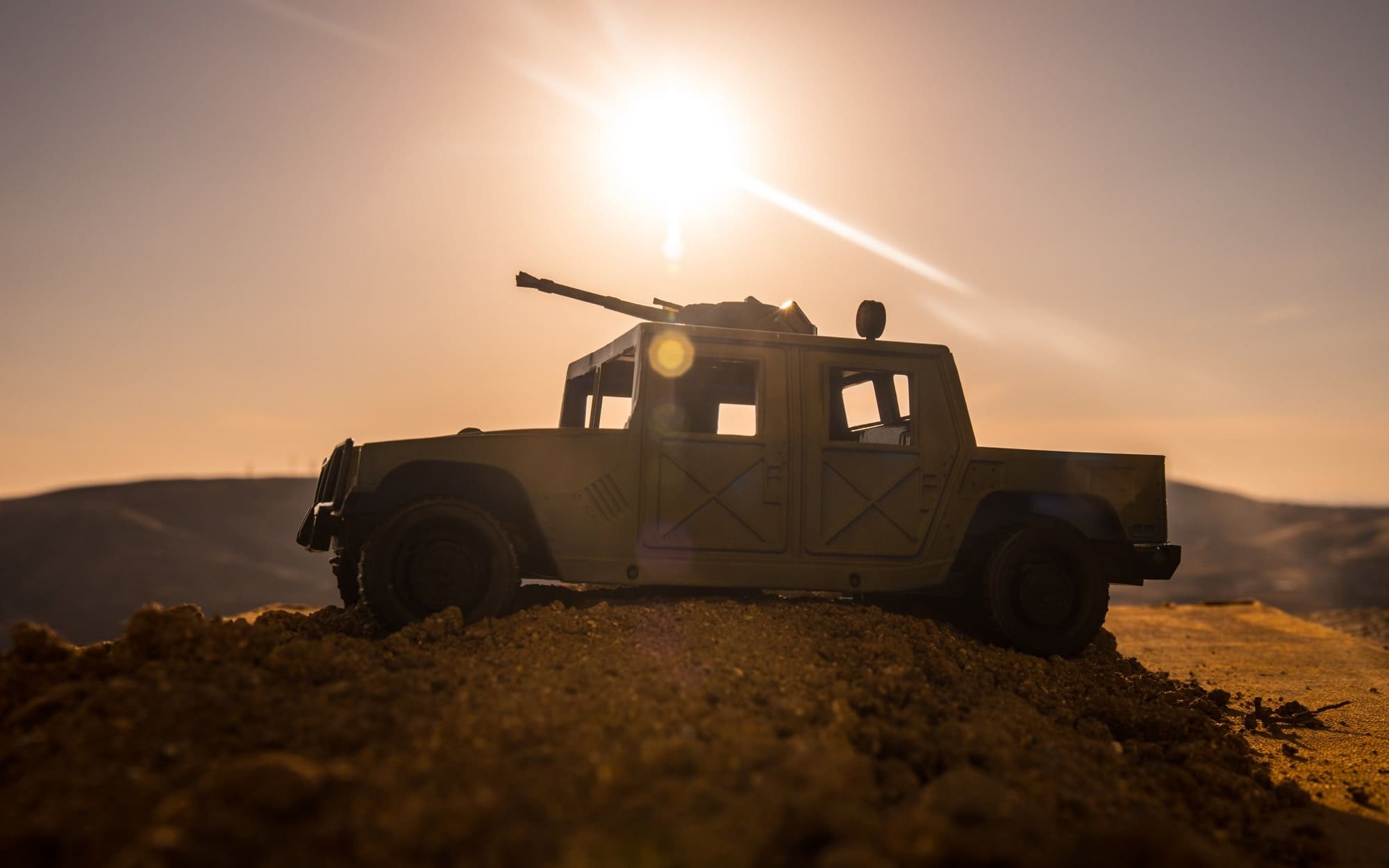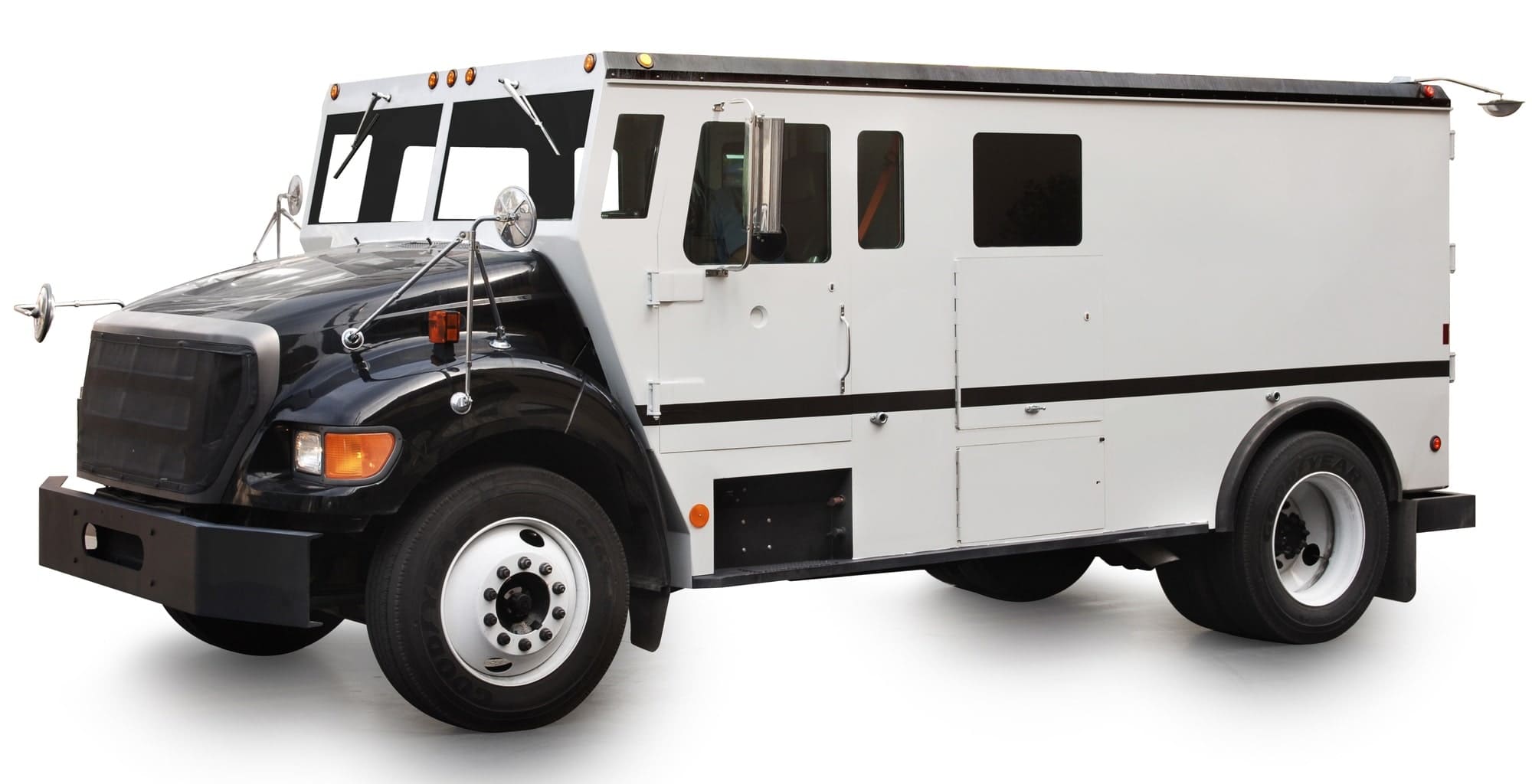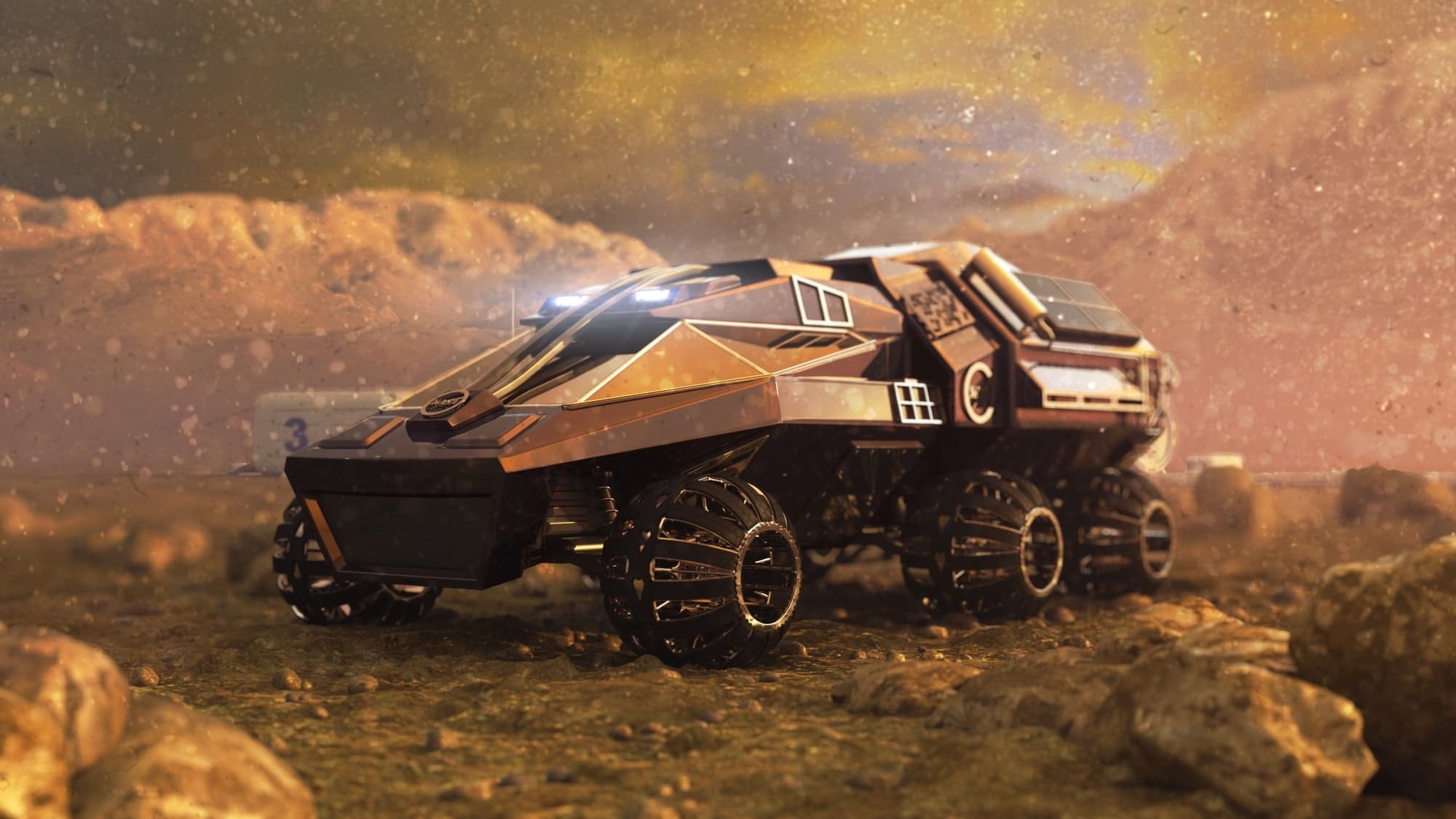As the Admiralty also managed oil production and processing, it decided to codename this vehicle the “tank” to mislead adversaries. This name is still used for self-propelled tracked armoured combat vehicles.
Nowadays, armed forces around the world have hundreds of different types of tanks and other self-propelled vehicles. A key feature that they share is an armoured hull made of specialty grade steel. This protects the crew and critical parts from bullets, shells and other devastating effects. Over the past 100 years, one of the main challenges for designers has been to reduce the weight of armoured vehicles while increasing the level of protection that they provide.
Aside from products for military use, civilian applications for armoured vehicles have also been developed. At the beginning of the 20th century, steel plates were used to reinforce the carriages of royalty and high-ranking officials. Today, armoured vehicles are used by heads of state, businesspeople, sport stars and entertainers. They are also used by government agencies and security services, as well as by banks for cash collection and transportation.
Below, we discuss what armour is, how these steels evolved, as well as the role that Ukraine played in these developments.
The term “armour” or “panzer” originated in the Middle Ages. It was used to denote the suits that knights wore to protect themselves from adversaries’ arrows or sword blows. As the means of warfare became more advanced, there was a growing need to protect people and equipment from new types of weapons, especially firearms.
In the 19th century, ships were among the first combat vehicles to use armour for protection. Artillery was the main weapon at sea. Until the 1840s, cannons fired steel cannonballs, from which the wooden planking of a ship’s hull provided good protection. That changed in 1849, when explosive grenades that could be fired from a cannon at point-blank range proved effective in battle. The wooden planking failed. New approaches to reinforce warship hulls were needed.

Battle of approaches and technology
By that time, metallurgy was already quite well developed. Research on the properties of steel armour for frigates and the design of armoured seagoing ships began almost simultaneously in Britain, France and the US. Engineers sought a material capable of strengthening a ship’s hull that was comparable to wood in terms of weight.
After careful study, two basic requirements were put forward for the metal that would eventually be used in self-propelled land vehicles, as well. First of all, it had to be hard enough to withstand shells and bullets while protecting equipment. Second, it had to be ductile to keep from cracking upon impact and absorb the energy of projectiles. Cost was a separate issue: the protective material had to be relatively cheap for mass production. While cast and wrought iron had such properties, cast iron was more brittle, so wrought iron became the material of choice for the first armoured ships. Notably, while a multi-layered armour made of metal and wood was initially used, it eventually became clear that solid iron plates were much more efficient.
The first ironclad warship was France’s La Gloire, which launched in 1859. The entire upper portion and some part of the ship that was under water were encased in wrought iron armour with a thickness of 110-120 mm. It became soon clear that there were no alternatives for iron and steel armour. Among other factors, they offered superior compatibility with steam engines: unlike wood, they did not burn. The next question was which particular metal to choose.
The second half of the 19th century witnessed a great deal of experimentation. The British created a compound dual-layer armour composed of a hard surface and a ductile base. To achieve this, molten steel was poured onto a heated wrought iron plate. The two plates were then rolled to improve their bonding. This helped to reduce the weight of the material.
Around the same time, the French company Schneider et Cie invented a steel plate containing 0.45% carbon for Italian ironclad warships. The manufacturing technology was kept secret. Although the steel provided good protection, it was difficult to produce. So, Eugène Schneider’s firm continued to experiment until they found a solution. The company’s specialists suggested adding nickel to the steel alloy. They patented the new product, which was even stronger and not overly costly. The US also started to manufacture this product.
Another new technology – case hardening, or steel cementation – was developed in the late 19th century by Augustus Harvey, an American inventor. In this process, the front surface of the armour steel was carburised, for example, through contact with charcoal. Known as Harvey steel, the face of the plates became extra hard after being quenched in oil and sprinkled with water multiple times. The quality of this material was 15-20% better than nickel steel. As such, it quickly displaced other types of armour.
In 1894, the German company Krupp enhanced the American metal by adding chromium. This material would long serve as the standard for amour steels.
Armour moves to land
The first armoured civilian vehicles emerged long before tanks. A carriage of the Russian emperor Alexander II is considered one of the first such vehicles. After several failed assassination attempts, a decision was made to reinforce the protection of the royal carriage. A steel plate was placed under the bottom. This decision essentially saved the tsar’s life during the next assassination attempt in March 1881: he was only stunned by the bomb blast. However, when he stepped out of the carriage, he was mortally wounded.
In the 1920s, American gangsters, who were engaged in a life-or-death fight with police, armoured their cars. They hid steel plates under the skin of production vehicles, which indeed saved their lives. But those were only solitary instances.
By the time mass production of armoured land vehicles began, steelmakers already had extensive experience creating materials capable of providing reliable protection for the crew and main components. Until the 1930s, the hulls of almost all armoured vehicles were riveted and primarily provided protection from bullets. However, the war in Spain during 1937-38 showed that tanks and armoured vehicles needed protection against other projectiles.
The first small production batches of armoured cars emerged around the same time. These limousines were used by US presidents as well as by Soviet dictator Joseph Stalin.
The manufacture of armour steel started in the territory of modern Ukraine around the same time. Originally, British technologies were used.

It eventually became clear that they were too costly and had a high rate of defects. Soviet enterprises started developing their own versions of homogenous and heterogeneous armour steels. Mariupol Heavy Engineering Works became one of the main production sites. It made armour that became known by the unique МЗ-2 grade, the 8С variant of which was used to manufacture the turrets and armoured hulls of the legendary Т-34 tank. Initially, the tanks were manufactured by welding stamped steel plates. In 1940, the plant in Mariupol began to produce cast turrets. The design, albeit slightly heavier, had several advantages compared with welding stamped parts. This evolution reduced production costs and made it easier to scale up production and move operations to other sites after the industrial plants in the Donbas region were evacuated during the occupation by Nazi Germany.
World War II did not stop the development of new light, medium and heavy armour steel grades for tank models, such as the 71L grade of medium-hard alloyed steel, the 66L grade of medium-hard armour, as well as the 74L and 75L grades for heavy tank turrets.
The war also fuelled the mass production of armoured light vehicles in Germany, the USSR, the US and other countries that had developed automotive industries. There were different reasons for producing such vehicles. For example, the first large batch of German Mercedes-Benz cars reinforced with armour plates was produced in 1942 after the assassination of a high-ranking German official who was riding in a convertible. In the USSR, an armoured ZiS-115 was manufactured for Stalin. The car weighed 7.3 tonnes: almost triple the weight of the standard model.
Post-war armour
Tank battles were among the key events that shaped the course of World War II. It is no surprise that the USSR and other countries intensified their research and development of metallurgical technologies for this segment of military equipment. In the Soviet Union, this work was led by Central Scientific Research Institute 48, one branch of which – Prometey Research Institute of Structural Materials – has operated in Mariupol (Zhdanov at the time) since the 1950s.
Ukrainian scientists and metallurgists were actively engaged in the development of new military technology. For example, in the second half of 1970, it was revealed that employees of three enterprises had conducted an experiment, as part of which they decided to change the properties of 42СМ steel using electroslag remelting (ESR). This technology improves the plasticity and toughness of plates without changing other production processes. The result met their expectations. The increased toughness of the 42СМ ESR steel provided greater anti-projectile resistance.
Modern steelmaking techniques, such as ladle metallurgy, are capable of achieving the same properties that could previously only be attained by means of electroslag remelting.
Likewise, civilian technology did not stand still after World War II. The redrawn world map led to continued tensions between countries. This caused major automobile manufacturers to establish special customisation shops focused not on designing or improving the technical parameters of engines and suspension, but rather on armouring vehicles. In 1946, Hess & Eisenhardt launched commercial production of limousines in the US that eventually became the vehicle of choice for American presidents. Today, the company is known as Centigon Security Group.
This manufacturer offers its customers two light vehicle armour options that have become the worldwide standard. The first reinforces key components of production vehicles with armour plates. The second essentially builds a new car around an armoured capsule to offer maximum protection for passengers and equipment. The latter solution enables customers to conceal the fact that a vehicle is armoured. Typically, it looks no different from a production car. Some armoured vehicle manufacturers even recommend buying two cars (standard and armoured) to make sure that only a limited number of people know which of the two the owner will be using on a given day.

Modern armoured vehicles
Extra-hard grades of ballistic steel are used to protect armoured vehicles. Such armour typically must have a Brinell hardness of 540-600. (The Brinell hardness scale is a widely applied material hardness test method that was proposed by Swedish engineer Johan Brinell in 1900.)
Today, the primary European manufacturers of steel plates for tanks are steelmakers from France and Sweden. They produce the MARS 190 (France) and ARMOX 370S (Sweden) tank armour steel grades, which must withstand the impact of large-calibre projectiles and meet weldability requirements.
They achieve this using chromium, nickel and manganese alloy steels that have limits on the allowable carbon content. Various hardness requirements apply depending on the plate thickness, as set out in such specifications as MIL-A-12560 “Armor plate, steel, wrought, homogeneous. For use in combat-vehicles and for ammunition testing”. >

ARMOX 300S and ARMOX 400S steels also meet these requirements. Due to their reduced carbon content, the required hardness is reached by subsequent quenching and low-temperature tempering. In addition to tank armour, other materials are used to protect light armoured vehicles, including armoured personnel carriers, infantry fighting vehicles, airborne infantry fighting vehicles and command vehicles. They have a thickness of 8-80 mm and can withstand the impact of small-calibre weapons. General-purpose armour steel is also used for ballistic vests and safes. It has a thickness of up to 50 mm and is produced in France, Sweden, Poland, Finland and Belgium.
Ukraine continues to produce armour steel today. Castings and parts made of specialty steel are made at specialised forging, casting and armoured vehicle manufacturing plants. Metinvest Group’s integrated steelmakers also make armour plates. For example, Kharkiv’s Malysheva Plant uses special steel produced in Ukraine to manufacture hulls for BTR-4 armoured personnel carriers.
High-strength anti-projectile armour steel produced by Ukrainian steelmakers is also used to manufacture the hull and turret of the Oplot, the country’s most modern main battle tank, which entered service in 2009. The excellent performance of this metal was achieved thanks to the use of alloying agents, such as chromium, molybdenum, nickel, manganese and vanadium. The plates underwent heat treatment and hardening by additional rolling.
Modern military technology is developed in strict secrecy, including armour plates. Many countries are looking to obtain such secrets, especially those with no experience in developing and using steel for military equipment.

The production of civilian armoured vehicles has its own secrets, driven by business advantages, competition and the clientele of such shops. They are not just businessmen and politicians looking to protect themselves and others close to them. Armoured vehicles are also bought by the police, cash-in-transit service providers and other security services. While protection is paramount for some clients (for example, during the transport of cash and valuables), secrecy matters most for others (such as for the transfer of important witnesses). Regardless, the use of ballistic steel plates ensures that all these vehicles provide the necessary level of security.
